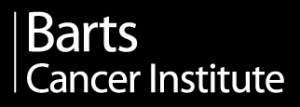January 28
2010
Biodesign Auditorium
727 E. Tyler St. Tempe
AZ 85287
Cancer is a disease of considerable complexity. Cancer originates from and is supported by a wide variety of alterations in the genome that often lead to drastic alterations of the cell’s control circuitry, producing a great deal of diversity in the molecular mechanisms operating in cancer cells. When attempting to make inferences from a diverse population, heterogeneity in either the network regulatory connections or operating rules blurs the relationships and rapidly reduces the ability to accurately discern regulatory interactions. This provides a considerable challenge to those attempting to determine which, of all the changes that can be seen, are consequential. However, knowledge of these regulatory changes will facilitate the discovery of prognostic markers and provide strong candidate drug targets. Current analytic methods rarely consider such complexity and heterogeneity. In addition, current methods to reverse-engineer regulatory mechanisms mostly concern a nearly homogeneous set of components that are nearly homogeneously co-regulated. In this talk, I will describe recently developed computational methods that can search through heterogeneous sample sets to identify subsets of samples in which sets of genes that collaborate to carry out particular pathologic functions are homogeneously regulated. The method then utilizes identified subsets of samples with higher homogeneity to learn context-specific regulatory mechanisms. The method can use simultaneous analysis of a variety of molecular and clinical characterizations, and an analytic strategy that detects limited homogeneity of behavior against a background of high heterogeneity. The utility of the methods will be demonstrated through its application to various biomedical data sets from NCI60 cell lines, REMBRANDT, and TargetNow study.



